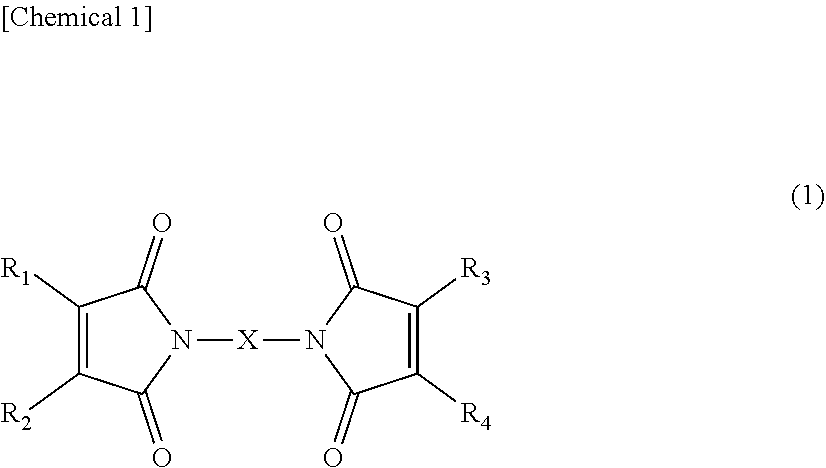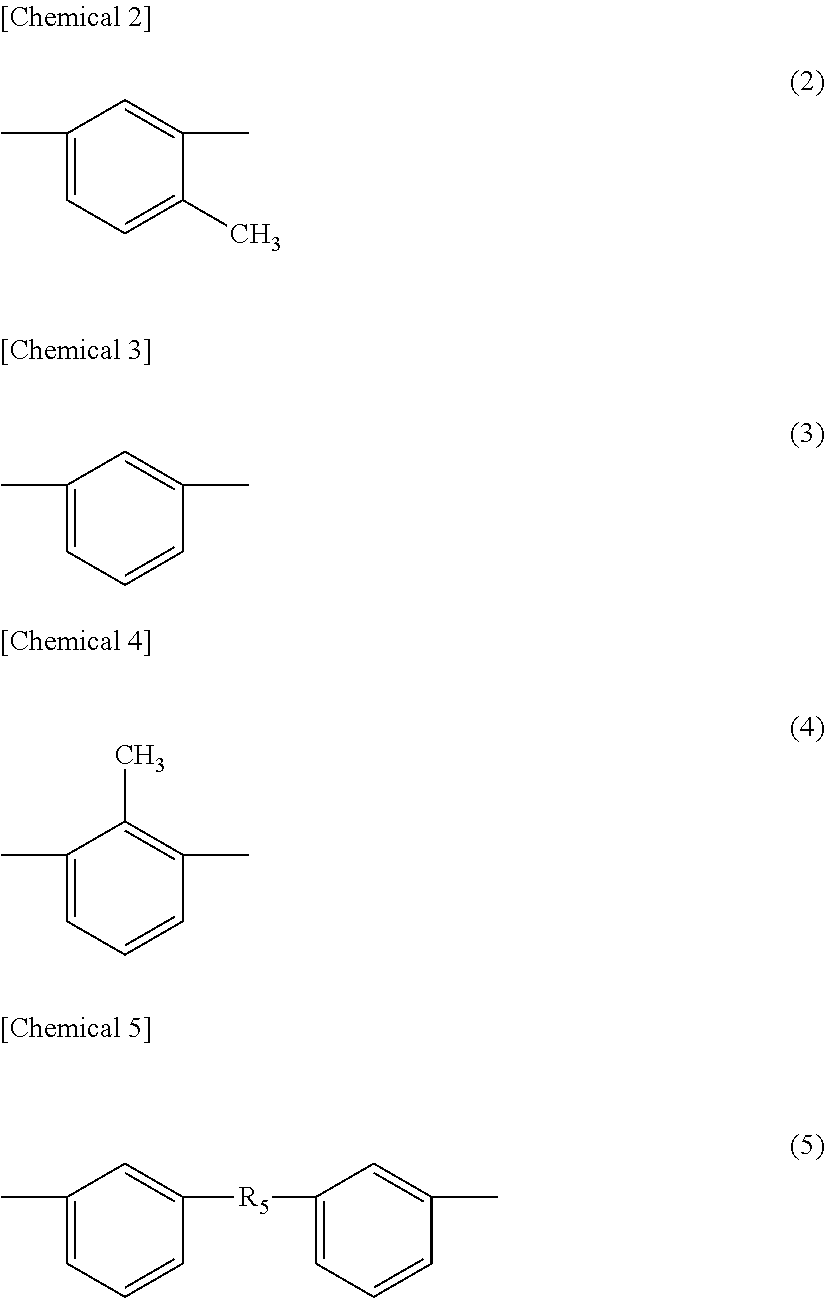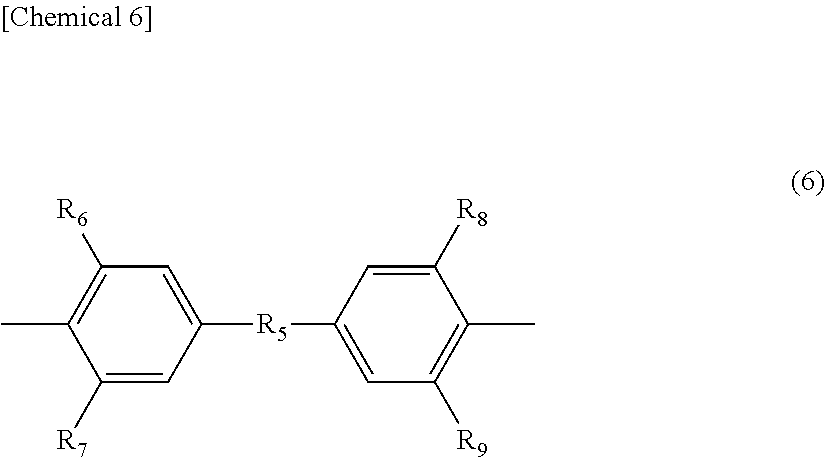Method for producing composite material
a composite material and manufacturing method technology, applied in the field of composite material production, can solve the problems of large equipment investment, large size of the autoclave molding apparatus having high pressurizing capacity, and limitation of the application of the autoclave molding method
- Summary
- Abstract
- Description
- Claims
- Application Information
AI Technical Summary
Benefits of technology
Problems solved by technology
Method used
Image
Examples
production example 1
[0137]A bismaleimide-based resin composition was prepared in the composition shown in Production example 1 in Table 1. Ta, Tb, Td, and Te of this bismaleimide-based resin composition were 123 [° C.], 63 [° C.], 70 [° C.], and 82 [° C.], respectively.
[0138]This bismaleimide-based resin composition was applied on a release film with an areal weight of 50 [g / m2] using a film coaler as a one-side resin film to obtain a resin sheet. Next / the carbon fiber (IMS 65) strands were fed between two resin sheets and uniformly arranged in one direction (carbon fiber volume content of 57 [vol %], areal weight of 190 [g / m2]), thereby being formed into a sheet. The resulting product was pressurized and heated at 100 [° C.] using a roller to obtain a prepreg. In this prepreg, the peak temperature (Tc) showing the maximum peak among the peaks observed in a range from 90 to 180 [° C.] in the total ion current chromatogram (TIC) obtained by the thermal gravimetric mass spectrometry measurement (TG-MS) ...
production example 2
[0139]A bismaleimide-based resin composition was prepared in the composition shown in Production example 2 in Table 1. Ta, Tb, Td, and Te of this bismaleimide-based resin composition were 125 [° C.], 64 [° C.], 69 [° C.], and 82[° C.] respectively. This bismaleimide-based resin composition was applied on a release film with an areal weight of 50 [g / m2] using a film coater as a one-side resin film to obtain a resin sheet. Next, the carbon fiber (IMS 65) strands were fed between two resin sheets and uniformly arranged in one direction (carbon fiber volume content of 57 [vol %], areal weight of 190 [g / m2]), thereby being formed into a sheet. The resulting product was pressurized and heated at 100 [° C.] using a roller to obtain a prepreg. In this prepreg, the peak temperature (Tc) showing the maximum peak among the peaks observed in a range from 90 to 130 [° C.] in the total ion current chromatogram (TIC) obtained by the thermal gravimetric mass spectrometry measurement (TG-MS) was 135...
production example 3
(Production Example 3
[0140]A bismaleimide-based resin composition was prepared in the composition shown in Production example 3 in Table 1. Ta, Tb, Td, and Te of this bismaleimide-based resin composition were 150 [° C.], 60 [° C.], 66 [° C.], and 79 [° C.], respectively. This bismaleimide-based resin composition was applied on a release film with an areal weight of 50 [g / m2] using a film coater as a one-side resin film to obtain a resin sheet. Next, the carbon fiber (IMS 65) strands were fed between two resin sheets and uniformly arranged in one direction (carbon fiber volume content of 57 [vol %], areal weight of 190 [g / m2]), thereby being formed into a sheet. The resulting product was pressurized and heated at 100 [° C.] using a roller to obtain a prepreg. In this prepreg, the peak temperature (Tc) showing the maximum peak among the peaks observed in a range from 90 to 180 [° C.] in the total ion current chromatogram (TIC) obtained by the thermal gravimetric mass spectrometry meas...
PUM
| Property | Measurement | Unit |
|---|---|---|
| viscosity | aaaaa | aaaaa |
| peak temperature | aaaaa | aaaaa |
| pressure | aaaaa | aaaaa |
Abstract
Description
Claims
Application Information
 Login to View More
Login to View More - R&D
- Intellectual Property
- Life Sciences
- Materials
- Tech Scout
- Unparalleled Data Quality
- Higher Quality Content
- 60% Fewer Hallucinations
Browse by: Latest US Patents, China's latest patents, Technical Efficacy Thesaurus, Application Domain, Technology Topic, Popular Technical Reports.
© 2025 PatSnap. All rights reserved.Legal|Privacy policy|Modern Slavery Act Transparency Statement|Sitemap|About US| Contact US: help@patsnap.com



